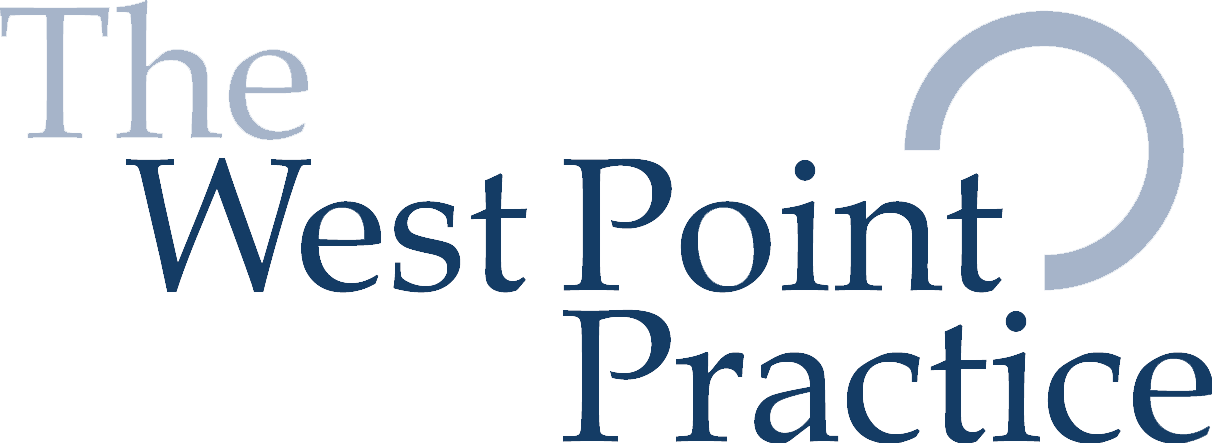Plantar Fasciitis
Plantar Fasciitis
In this blog I am going to take a look at heel pain (plantar fasciitis). This condition is common in runners. It is also something that I have recently recovered from, so hopefully I can provide some useful advice from my own experience.
The main symptom of plantar fasciitis is pain in the heel region, near to the insertion of the plantar fascia.
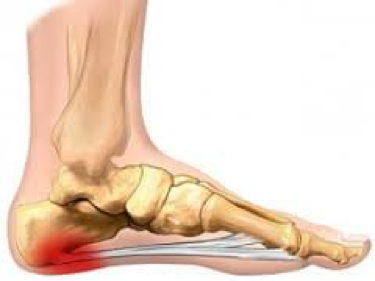
In my experience the condition is commonest in runners and in people who stand for long periods in their job. A high body mass index is also a common risk factor. In my case it was caused by standing for longer periods at work in shoes without good cushioning.
Pain is normally worse 1st thing in the morning, the first few steps can feel like walking on glass! It can also be painful when walking after a period of prolonged sitting. It normally gets easier the more you walk but will normally be worse if you walk too far or spend too long standing.
Treatments
There are a number of treatment options available for plantar fasciitis. In my experience a combination of treatments works best. One of the things that I found helpful initially was to wear supportive shoes with good heel cushioning. Running trainers are ideal. You could also try buying gel heel cushions. They can help improve comfort when standing or walking by improving shock absorbency. If your job involves standing for long periods, I would recommend speaking with your employers to see if you can reduce the amount of time spent standing as this can often help symptoms to settle down.
For those of you that are runners who suffer from heel pain, you may have to reduce the distances you run. If you feel significantly worse after running, you may need to stop running for a short period to allow your symptoms to settle. What often happens is the pain will be present at the start of the run then ease off and get worse towards the end of the run. The pain will normally be worse the further you run, therefore, reducing the distances that you run can be helpful. To maintain fitness levels, cycling or cross-trainer in the gym are great as these involve less impact forces. It can also be a good time to work on improving lower limb strength with some simple home exercises like squats, lunges and single leg dips.
Other treatments that are shown to help are regular plantar fascia and calf stretches and strengthening exercises. Self-massage with something like a golf ball or rolling pin to the medial arch of the foot can help.
Plantar fascia Stretch 5 x 10 second holds, 3 x per day
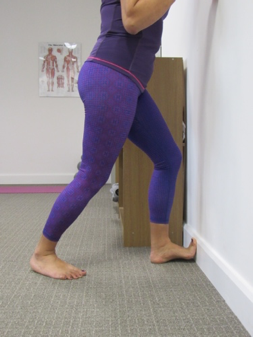
Calf stretch – 5 x 10 second holds, 3 x per day
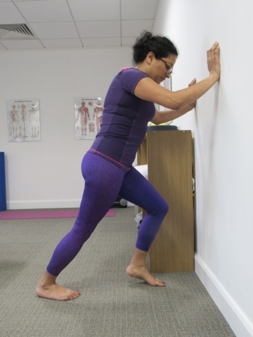
Strengthening programme – heel raise on a rolled-up towel
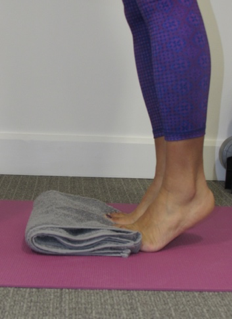
The heel raise is performed on a floor or a step with the toes extended on a rolled-up towel. The exercise should be uncomfortable but not painful, we would normally say a maximum pain of 4 out of 10. I would advise 3 sets of 10 repetitions. If at first you are unable to do the exercise 1 legged, do 2 legged and gradually try to increase the load to 1 legged. If you are able to do this without fatigue when doing 10 repetitions, add weight to the exercise – using a ruck sack with books or tins of food in is ideal.
Soft tissue massage with ball or bottle – 5 minutes once every day.
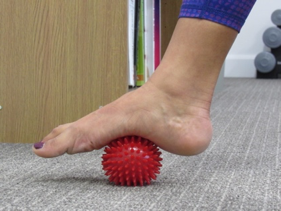
If you have any questions about plantar fasciitis or want to book in for an initial assessment to see if you have got plantar fasciitis, please contact us either by email at appointments@westpointpractice.co.uk, call 0113 244 0115 or book online at http://www.thewestpointpractice.selectandbook.com
